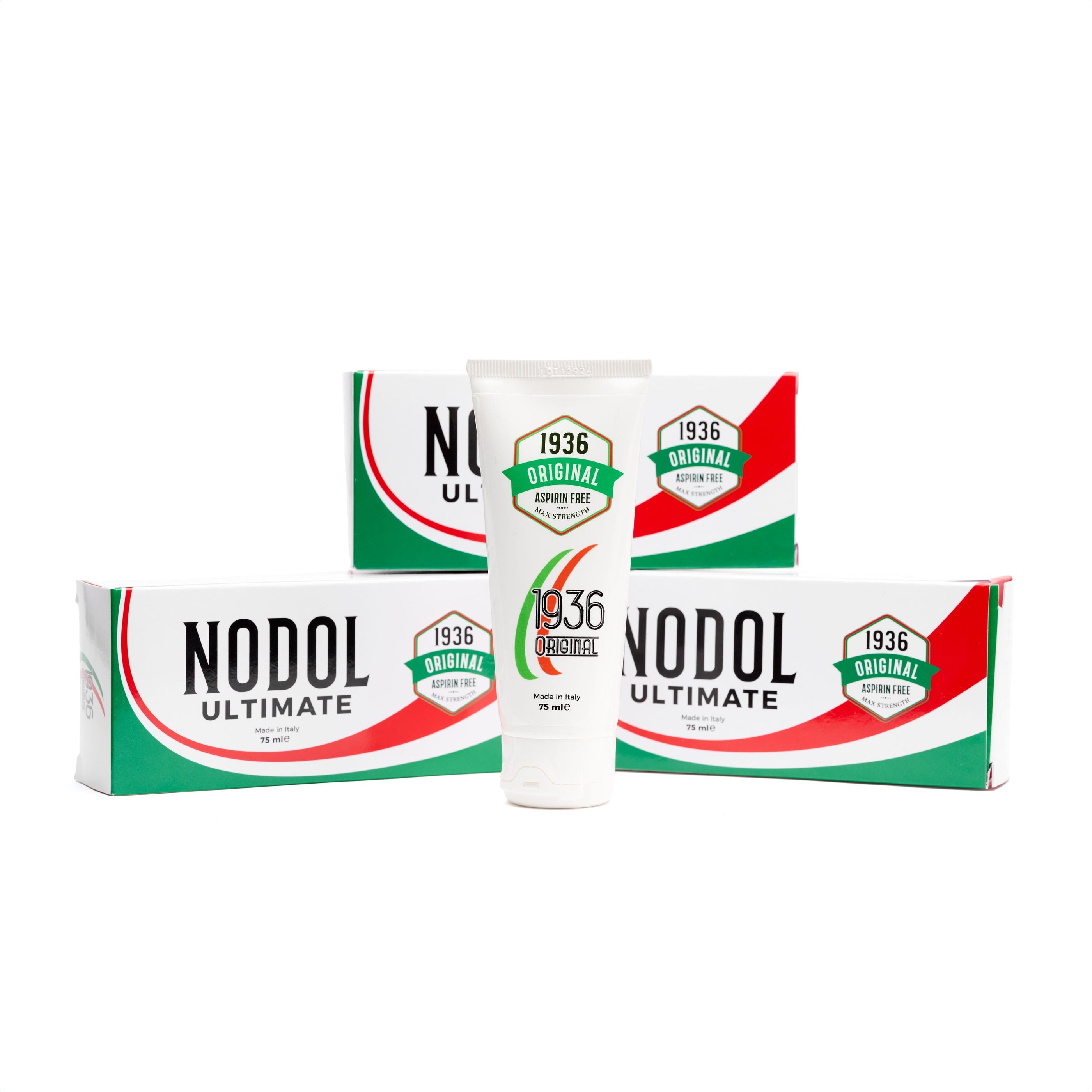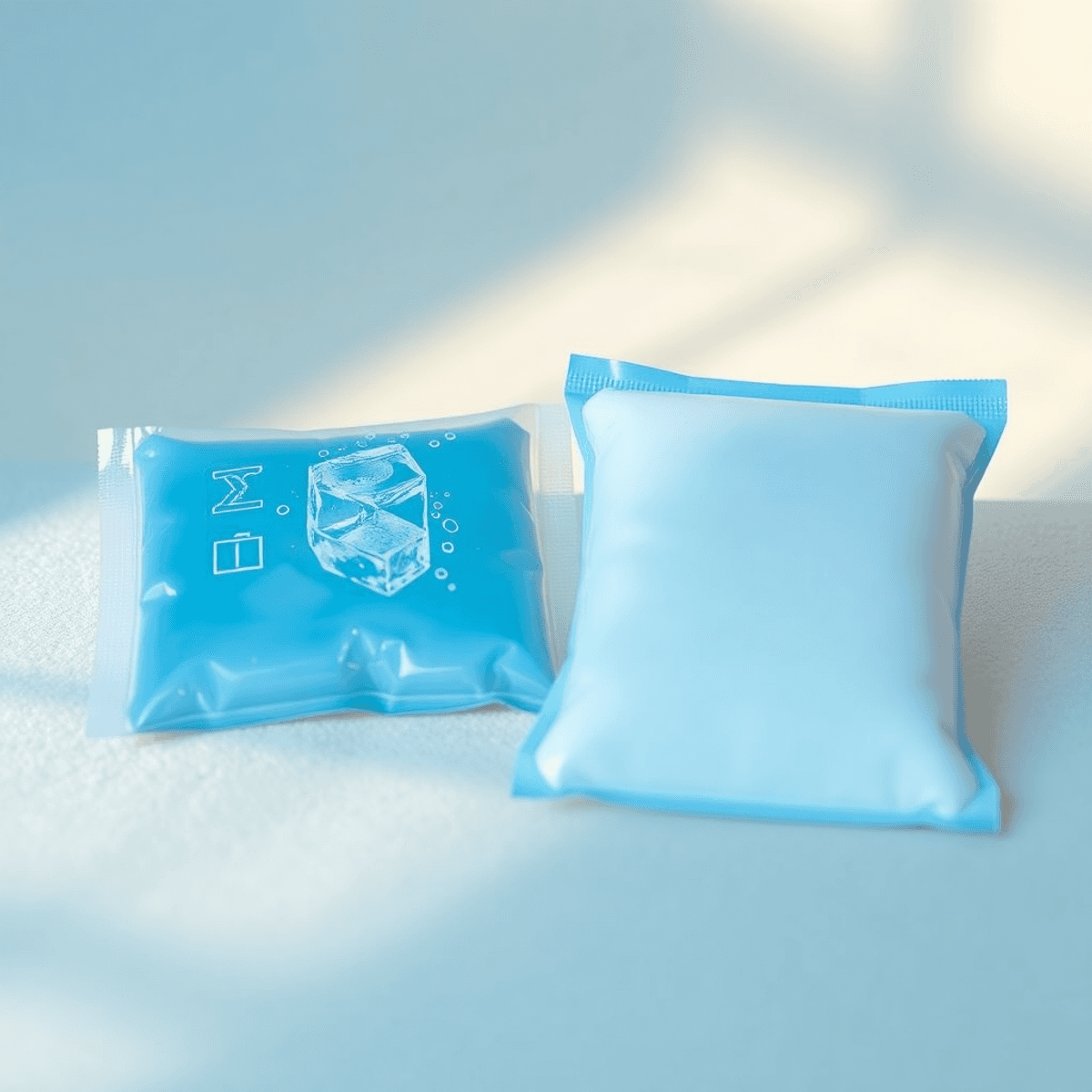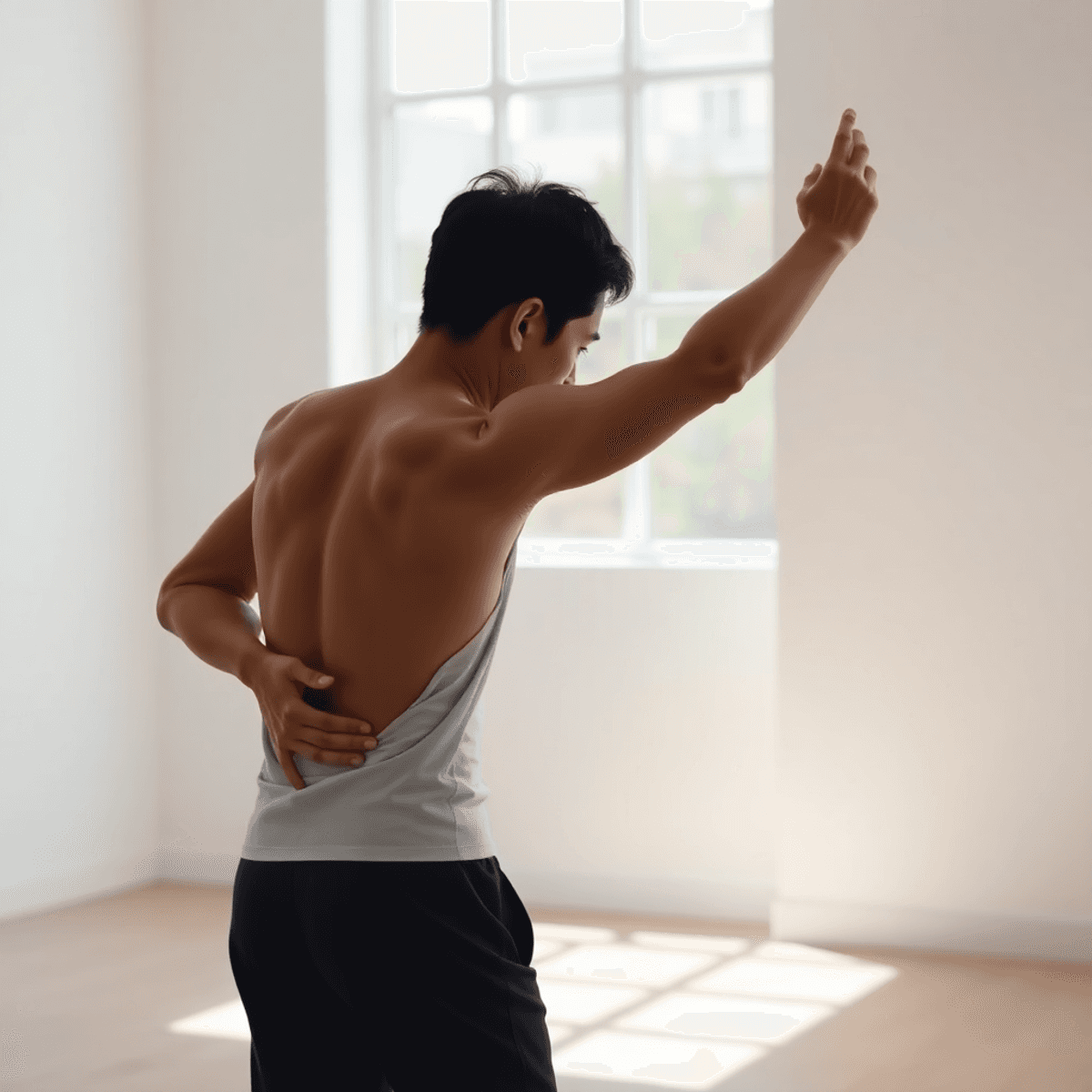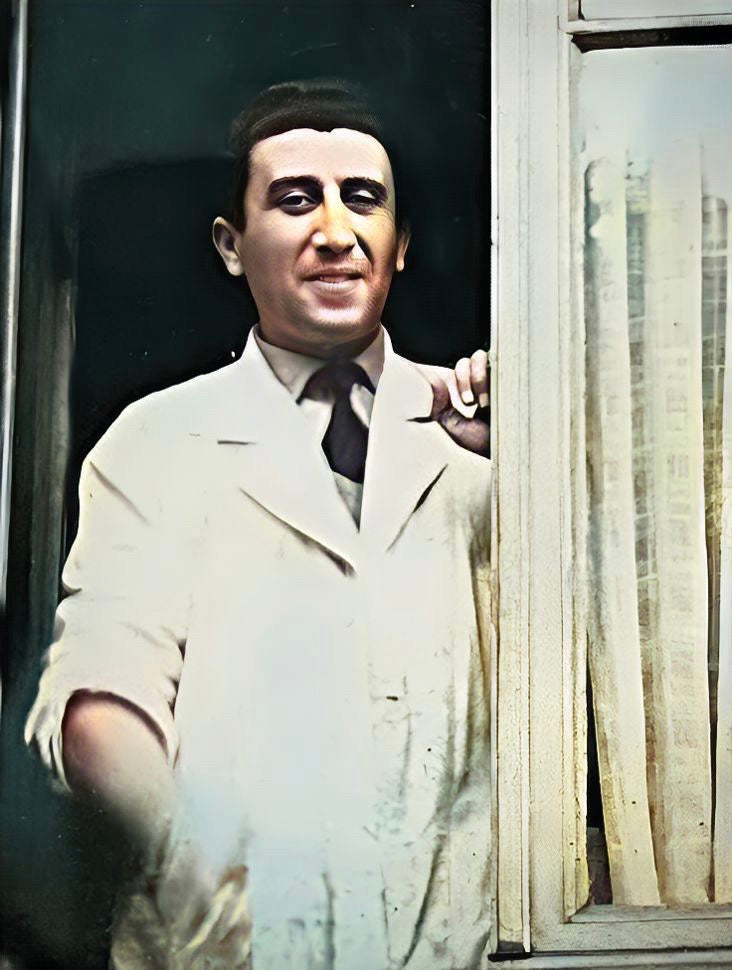Calf Muscle Hurting? Here’s How to Treat It Like a Pro

Introduction
A pulled calf muscle can stop you in your tracks. Whether you're an athlete pushing your limits or someone experiencing this sharp, sudden pain during daily activities, calf muscle injuries can significantly impact your mobility and quality of life.
The good news? Most calf strains respond well to proper treatment. With the right approach, you can expect a full recovery within 2-6 weeks, depending on the severity of your injury.
Common signs of a calf strain include:
- Sharp pain in the back of your lower leg
- Swelling and tenderness
- Difficulty walking or standing on tiptoes
- Muscle weakness or tightness
These injuries typically occur during activities requiring quick movements or sudden changes in direction. Running, jumping, and sports like tennis or football are common culprits.
For immediate pain relief, many people find success with topical treatments like those offered by 1936 Original. This targeted approach can help manage discomfort while your body heals.
Understanding your injury is crucial for proper recovery. The severity of your strain determines the best treatment approach - from simple rest and ice therapy for mild cases to professional medical intervention for severe tears.
Ready to get back on your feet? Let's explore how to identify, treat, and prevent calf muscle injuries effectively. In addition to topical treatments, certain exercises can also aid in recovery. For example, here are some expert-recommended exercises that could alleviate not just calf strain but also other related discomforts such as lower back pain.
Understanding Calf Muscle Strains
Your calf consists of two primary muscles working together to power your movements:
1. The Gastrocnemius Muscle:
- Located at the back of your lower leg
- Forms the visible bulge of your calf
- Powers explosive movements like jumping and running
- Connects your heel to your knee joint
2. The Soleus Muscle:
- Lies beneath the gastrocnemius
- Maintains posture and stability
- Essential for walking and standing
- Connects your heel to your lower leg bones
Calf strains occur in three distinct grades, each requiring specific treatment approaches:
Grade 1 (Mild):
- Small number of muscle fibres affected
- Minimal loss of strength
- Recovery time: 1-2 weeks
- You can usually walk normally
Grade 2 (Moderate):
- Partial muscle tear
- Notable strength reduction
- Recovery time: 3-6 weeks
- Walking becomes painful
Grade 3 (Severe):
- Complete muscle tear
- Significant loss of function
- Recovery time: 3-4 months
- Walking requires support
The severity of your strain determines your recovery timeline and treatment needs. A proper diagnosis helps create an effective rehabilitation plan tailored to your specific injury grade.
Recognising a Calf Strain
A calf strain announces itself through distinct physical symptoms. You'll likely experience:
- Sharp, stabbing pain in the back of your lower leg
- Tightness or stiffness, particularly in the morning
- Visible swelling or bruising
- Weakness when trying to push off your toes
- Difficulty walking or climbing stairs
The severity of your strain determines the intensity of these symptoms:
Grade 1 (Mild)
- Minimal pain during movement
- Slight tenderness to touch
- Normal walking ability
Grade 2 (Moderate)
- Noticeable pain during activity
- Restricted walking
- Visible swelling
Grade 3 (Severe)
- Intense, immediate pain
- Inability to walk without support
- Significant swelling and bruising
- Visible or felt gap in the muscle
Seek immediate medical attention if you:
- Cannot bear weight on the affected leg
- Feel or hear a "pop" during injury
- Experience severe pain and swelling
- Notice significant bruising
Causes and Risk Factors for Calf Strains
Calf strains commonly occur during specific sports activities that demand rapid acceleration, sudden direction changes, or explosive movements. These activities include:
- Running and Sprinting: Quick bursts of speed put intense strain on calf muscles
- Tennis: Rapid side-to-side movements and quick starts/stops
- Soccer: Frequent jumping, kicking, and sudden directional changes
- Basketball: Repetitive jumping and landing movements
The mechanism of injury typically involves:
- Sudden acceleration or deceleration
- Pushing off with a straightened leg
- Abrupt stretching of the calf muscle
- Landing awkwardly from a jump
Age and Gender Considerations
Men aged 40+ face a higher risk of calf strains due to:
- Decreased muscle elasticity
- Reduced blood flow to muscle tissues
- Natural muscle mass decline
Additional risk factors include:
- Poor Conditioning: Weak or inflexible calf muscles
- Inadequate Warm-up: Cold muscles are more susceptible to injury
- Previous Injuries: History of calf strains increases future risk
- Dehydration: Reduces muscle flexibility and performance
- Fatigue: Tired muscles react slower and are more prone to injury
Environmental Factors
Environmental factors that can contribute to calf strains include:
- Training on hard surfaces
- Wearing inappropriate footwear
- Sudden increases in training intensity
- Cold weather conditions
Immediate Treatment for a Calf Strain Injury
Quick action is crucial when you experience a calf strain. The RICER method stands as the gold standard for immediate treatment:
- Rest: Stop all physical activity immediately. Continuing to exercise can worsen the injury and extend recovery time.
- Ice: Apply ice packs wrapped in a thin towel to the affected area for 15-20 minutes every 2-3 hours. This helps reduce swelling and manage pain during the first 48-72 hours.
- Compression: Use an elastic bandage to wrap your calf, starting from the ankle and moving upward. The pressure should be firm but not tight enough to restrict blood flow.
- Elevation: Keep your leg raised above heart level when resting. Place pillows under your calf while lying down.
- Referral: Assess the need for professional medical attention.
During the first 48 hours, avoid these activities that could worsen your injury:
- Hot showers or heat packs
- Alcohol consumption
- Running or jumping
- Deep tissue massage
- Stretching exercises
Signs indicating the need for immediate medical attention include:
- Severe pain that prevents walking
- Noticeable deformity in the calf
- A popping sound at the time of injury
- Significant swelling or bruising
The RICER method proves most effective when implemented within the first few minutes after injury, maximising your chances of a swift recovery.
Pain Relief Options During Recovery From a Calf Strain Injury
Managing pain during calf strain recovery requires a strategic approach combining medication and topical treatments. Here's what you can use to alleviate discomfort:
Over-the-Counter Medications
- NSAIDs (Nonsteroidal Anti-inflammatory Drugs)
- Ibuprofen (400-600mg every 6-8 hours)
- Naproxen sodium (220mg twice daily)
- Paracetamol (500mg-1g every 4-6 hours)
Topical Pain Relief
- 1936 Original pain relief cream Targets localised pain
- Provides quick-acting relief
- Safe for regular application
- Cold gel packs
- Menthol-based rubs
Natural Pain Management
- Cold therapy (15-20 minutes per session)
- Gentle massage around affected area
- Proper positioning during rest
Remember to stay within recommended dosages for oral medications. Combining oral and topical treatments often provides the most effective pain relief strategy. Some people experience better results using topical treatments like the 1936 Original pain relief cream before bed to reduce night-time discomfort and improve sleep quality during recovery. This cream is part of a broader range of products offered by 1936 Original designed to provide effective pain relief and management, including options for back, joint, knee, neck and muscle pain.
Rehabilitation Exercises for a Full Recovery From a Calf Strain Injury
Your body signals when it's ready to start rehabilitation exercises. Watch for these signs:
- Decreased pain during daily activities
- Ability to walk without significant discomfort
- Reduced swelling in the affected area
- Improved range of motion
Essential Gentle Stretches
Start with these basic stretches, holding each for 15-20 seconds:
1. Wall Stretch
- Stand facing a wall, arms extended
- Step the injured leg back
- Keep both heels flat on the ground
- Lean forward until you feel a gentle pull
2. Seated Towel Stretch
- Sit with legs extended
- Loop a towel around the ball of your foot
- Gently pull the towel towards you
- Maintain a straight knee
Progressive Strengthening Exercises
Add these exercises as your recovery progresses:
1. Heel Raises
- Start with both feet flat
- Rise onto your toes
- Lower slowly
- Progress to single-leg raises
2. Resistance Band Work
- Wrap band around foot
- Point toes away from you
- Control the movement back
- Perform two sets of 10 repetitions
Important Safety Guidelines
- Start with 5-10 repetitions
- Stop if you experience sharp pain
- Progress gradually - add 2-3 repetitions daily
- Maintain proper form throughout
- Rest between exercise sessions
Remember to perform these exercises on both legs to maintain muscle balance. Your uninjured leg serves as a benchmark for strength and flexibility goals during recovery.
Preventing Future Calf Strains Through Proper Care And Conditioning Techniques
A well-structured prevention strategy can significantly reduce your risk of experiencing calf strains. Here's what you need to implement in your fitness routine:
Proper Warm-up Protocol
- Start with 5-10 minutes of light cardiovascular activity
- Include dynamic stretches targeting your lower legs
- Perform ankle circles and heel-to-toe walks
- Incorporate light jogging or brisk walking
Activity Level Management
- Increase workout intensity by no more than 10% weekly
- Allow adequate rest days between intense training sessions
- Listen to your body's signals and adjust accordingly
- Mix high-impact activities with low-impact exercises
Hydration and Nutrition
- Drink water before, during, and after exercise
- Maintain proper electrolyte balance
- Consider sports drinks for workouts lasting over an hour
- Monitor urine colour to gauge hydration levels
Footwear Selection
- Replace athletic shoes every 400-500 miles
- Choose shoes with proper arch support
- Consider custom orthotics if recommended by a professional
- Ensure correct shoe size with adequate toe room
Environmental Considerations
- Adjust workout intensity based on weather conditions
- Exercise on appropriate surfaces for your activity
- Wear suitable clothing to maintain optimal muscle temperature
- Schedule outdoor activities during appropriate times of day
When To Seek Professional Help For A Calf Strain Injury?
While many calf strains can heal with proper home care, certain symptoms signal the need for immediate medical attention:
Red Flag Symptoms:
- Severe pain that doesn't improve after 24 hours of RICE treatment
- Inability to bear weight on the affected leg
- A popping sound at the time of injury
- Significant swelling or bruising in the calf area
- Numbness or tingling sensations in your foot
- Visible deformity in the calf muscle
Seek Medical Care If You Experience:
- Pain that disrupts your sleep
- Symptoms that persist beyond 2 weeks despite home treatment
- Recurring calf strains
- Limited range of motion in your ankle
A healthcare professional can provide accurate diagnosis through physical examination or imaging tests. They might recommend specific treatments such as:
- Physical therapy
- Custom exercise programmes
- Professional sports massage
- Prescription medications
- In rare cases, surgical intervention
Remember: Early medical intervention can prevent long-term complications and speed up your recovery process.
FAQs
What are the primary muscles involved in a calf strain?
The calf consists of two primary muscles: the Gastrocnemius muscle, which is located at the back of your lower leg and forms the visible bulge, and the Soleus muscle, which lies beneath the gastrocnemius and helps maintain posture and stability.
How can I recognise a calf strain?
A calf strain typically announces itself through distinct physical symptoms such as sudden pain in the back of the lower leg, swelling, bruising, or difficulty walking. The severity can range from mild to severe based on the extent of muscle fibre damage.
What immediate treatments can I apply for a calf strain?
Quick action is crucial when experiencing a calf strain. Recommended immediate treatments include rest, ice application for 15-20 minutes to reduce swelling, compression with an elastic bandage, and elevating the injured leg to minimise swelling.
What rehabilitation exercises should I consider during recovery?
During recovery, essential gentle stretches such as Wall Stretch and Seated Towel Stretch can be beneficial. As you progress, you can incorporate strengthening exercises like Heel Raises and Resistance Band Work to regain strength and flexibility.
How can I prevent future calf strains?
Preventing future calf strains involves a well-structured strategy including proper warm-up protocols with light cardiovascular activity, managing activity levels by increasing intensity gradually, staying hydrated, maintaining adequate nutrition, and selecting appropriate footwear.
When should I seek professional help for a calf strain?
While many calf strains can heal with proper home care, you should seek professional help if you experience severe pain that doesn’t improve with rest, significant swelling or bruising, or if you're unable to put weight on your leg after a few days.












